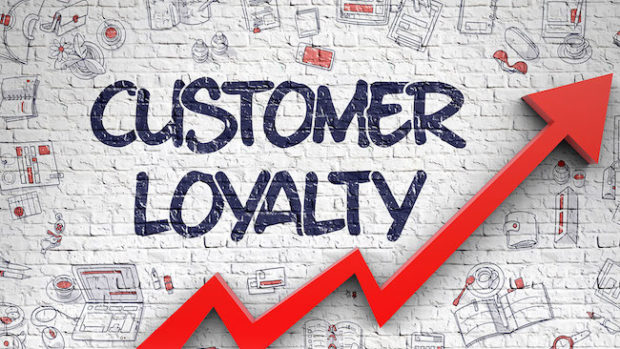The tough economic situation in the UK, driven by high inflation and a cost of living crisis, is affecting not only consumers but also online merchants. The Office for National Statistics reports that online sales in the UK have dropped by 2.3 per cent across most retail segments in the past year, painting a particularly grim picture for the eCommerce sector. It has, therefore, never been more important for online retailers to actively listen to their customers and make strategic, impactful and nimble changes to their business to best reflect customer demands and shopping trends.
Technical debt is causing a real-life problem for retailers, allowing for a huge expectation gap to grow between what consumers want, and what retailers can realistically deliver against a backdrop of rising business costs and falling consumer disposable income. Despite the fact both consumers (46 per cent) and retailers (33 per cent) pinpointed shipping and returns as their number one pain point, the fact remains that retailers are paralysed by the dichotomy of choice – prioritising everything over focusing on the few target areas (such as delivery and seamless checkout experiences) which are most likely to cause a potential sale to fall-through.
A new research report, “A Nightmare on E-Street”, published by Primer, a no-code automation platform offering the infrastructure for effortless commerce experiences– explores the pain points and emerging trends in eCommerce, from both sides of the checkout.
Gabriel Le Roux, Co-Founder of Primer says: “Online retailers must look to future-proof their business whilst ensuring it can weather the volatile market conditions we’re currently experiencing. Whilst they currently face the nightmare of having to do more with less, there are impactful and easy-to-adopt strategies that can pay big dividends. Our research provides a blueprint for eCommerce, allowing retailers to pinpoint consumers’ biggest pain points, and adopt the best business strategies in 2023 and beyond.”
The Expectation Gap: How Delivery Costs Can Make or Break a Business
Nailing your delivery costs is big business for retailers, and too often it seems, they’re falling short of the mark. The majority of Brits (46 per cent) named expensive delivery costs as their biggest pain point when shopping online, with half (48 per cent) admitting that expensive delivery costs would be the leading cause for them abandoning their shopping cart ahead of payment. It should, therefore, come as no surprise that ‘shipping and returns’ also came out as the number one pain point (33 per cent) for British retailers.
What might be more shocking is the fact that shipping and returns did not come out as the lead area that online retailers are looking to invest in as we move into 2024 and beyond. In fact, ‘streamlining fulfilment and shipping’ (25 per cent), came fifth down the list on importance when asked which area of their business they thought held the best opportunities for future growth, behind expanding their product offering (27 per cent), and increasing their social media presence (26 per cent).
Considering that UK retailers believe over a third (37 per cent) of all shopping carts are abandoned before payment is completed by a customer, with the average online shopping carts valued at £213.84, not acting on consumer demands for affordable delivery (and speedy checkout) could dramatically damage their bottom line. In the age of Amazon Prime, is it time for a new delivery model? Whether that’s through subscriptions, such as Asos, Deliveroo or Uber eats, or factoring delivery costs into the overall price to ensure ‘free’ delivery can be offered, 2023 should be the year that online retailers prioritise nailing their delivery offering.
For todays ‘time poor’ consumers, it’s not only expensive delivery costs that can put them off their purchase – speed and simplicity are also a must for all retailers’ checkout processes. Of the three quarters (76 per cent) of consumers who admit they’d abandon their shopping basket if the process took too long, 41 per cent would do so after just four minutes, with 15 per cent only giving a retailer up to two minutes before they gave up.
“It’s never been more important to nail your checkout process and ensure there are no barriers to purchase. Whilst UK retailers may be aware of the importance of maintaining their payment process, with 100 per cent of retailers making improvements over the course of the past year to keep up with new technologies and consumer payment trends, they need to ensure that the changes they’re making reflect the demands of consumers. Seamless checkout processes and affordable delivery are what consumers want, therefore, where retailers need to be focusing their efforts,” says Gabriel Le Roux, Co-Founder of Primer.
Two Sides of the Same Coin: Technical Debt and Automation
Whilst British retailers top pain points may vary, with ‘shipping and returns’ (33 per cent), ‘attracting and retaining staff’ (33 per cent), and developing and maintaining their eCommerce store (32 per cent), making the top three, the underlying cause attributed to all of these pain points is far more universal with almost half (47 per cent) of UK retailers pinpointing ‘technical debt’ as the underlying cause of their main pain points within their business.
However, retailers are starting to wake up to the instrumental impact that reducing technical debt can have on every aspect of their business, with reducing technical debt emerging as the biggest area of future investment for UK retailers (34 per cent) as they battle against rapid advancements in technology and the ever changing nature of the retail industry. The question will be, can retailers invest quickly enough to keep pace with ever-changing consumer expectations? One of the key ways to reduce technical debt is to increase the amount of automation within your business to reduce administration and human involvement, and therefore save time and money. In fact, 91 per cent of retailers have either previously invested or plan to invest in automation over the course of the next year.
Alongside automation, the rise of AI is causing a stir within the retail industry, with the majority (67 per cent) of UK retailers being open to implementing AI tools within their customer journey. With 30 per cent taking a proactive approach in the belief that AI is the future of eCommerce, and the remaining 37 per cent ready to explore the uses of AI but cautiously exploring its potential benefits and drawbacks As AI continues to change the way we shop by providing a more personalised experience, retailers should take note of the growing unease around AI felt by consumers, and balance its introduction with more traditional forms of automation, such as inventory management, order fulfilment, and payment automation. The majority of consumers (64 per cent), are concerned with the use of AI within their shopping experience – whilst over a third (37 per cent) of British consumers are concerned about their privacy and dislike the personalised shopping experience, a further 27 per cent are concerned due to their lack of understanding of AI.
The Future of Retail is Here and it’s Social
Social eCommerce is one of 2023 biggest growth areas within retail, with the majority of Brits (54 per cent) having either already purchased items through social media or planning to do so in the future. Whilst Gen Z leads the charge on social media shopping with 42 per cent having already purchased items through social media and a further 37 per cent planning to do so in the future, Millennials aren’t far behind, with 39 per cent having already bought an item through social media, and 32 per cent planning on doing so in the future.
Whilst it may not be surprising that younger shoppers are already using social media for commerce, the fact that older generations are not far behind demonstrates the future opportunities social commerce provides for online retailers. One in three (29 per cent) of baby boomers have either purchased an item or plan to do so in the future through social media, with half (50 per cent) of Gen X the same.
Encouragingly, one in three (32 per cent) UK retailers have added social media as a sales tool during the past year alone, and of the retailers who are already using social commerce to sell directly to consumers, this channel is bringing in an average of 37 per cent of their current revenue.
The Rise of PayPal and Decline of Card
Payment choices are big business for retailers, with a staggering 69 per cent of Brits admitting that they would abandon their online shopping basket and not proceed to payment if their preferred payment method was not offered by that retailer. So what do consumers want, and which payment method do they trust?
It seems modern payment methods are beginning to overtake more traditional plastic options, as PayPal is crowned payment king (31 per cent) as it beats out debit cards (26 per cent) and credit cards (17 per cent) to be named the UK’s preferred payment method when shopping online. PayPal also pips credit and debit cards to the post to be named Britain’s most trusted payment method with 50 per cent of Brits trusting them with the personal data, versus 47 per cent for debit/credit cards and just 8 per cent for Klarna.








Share